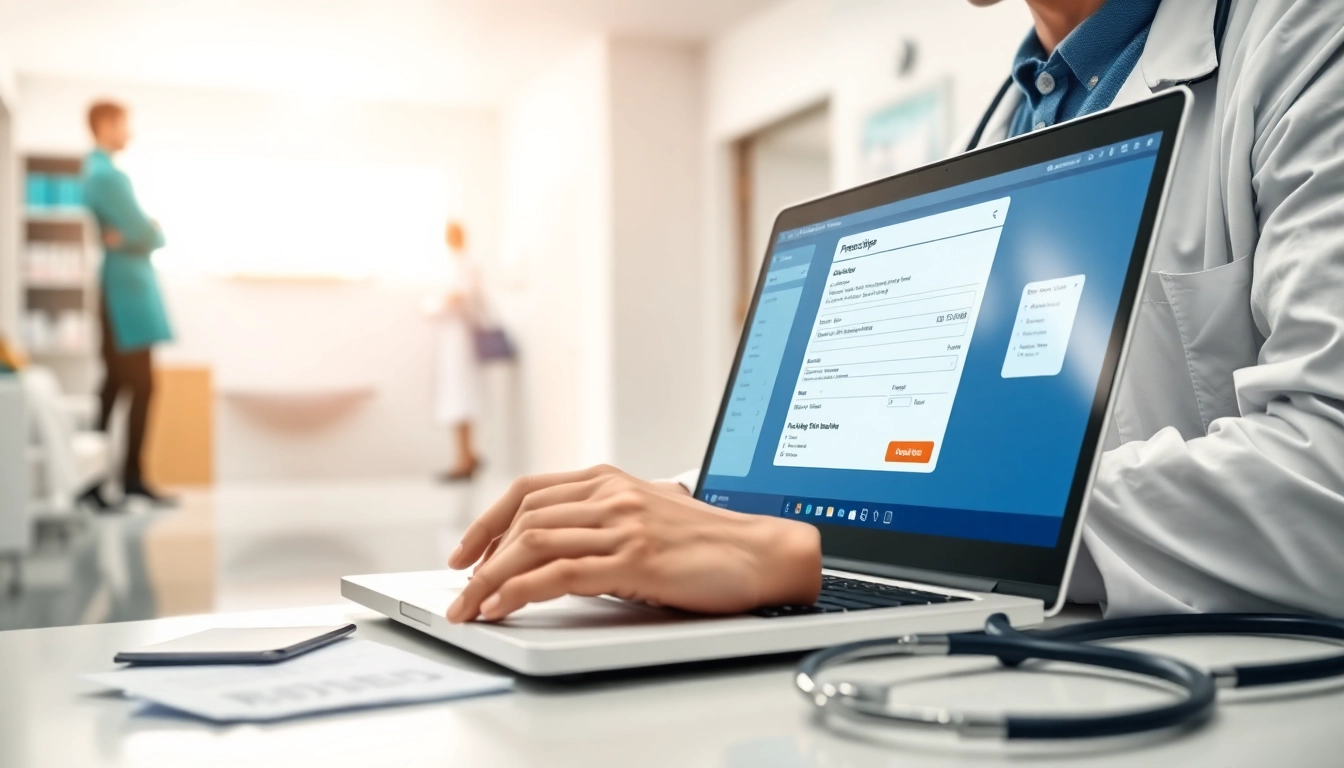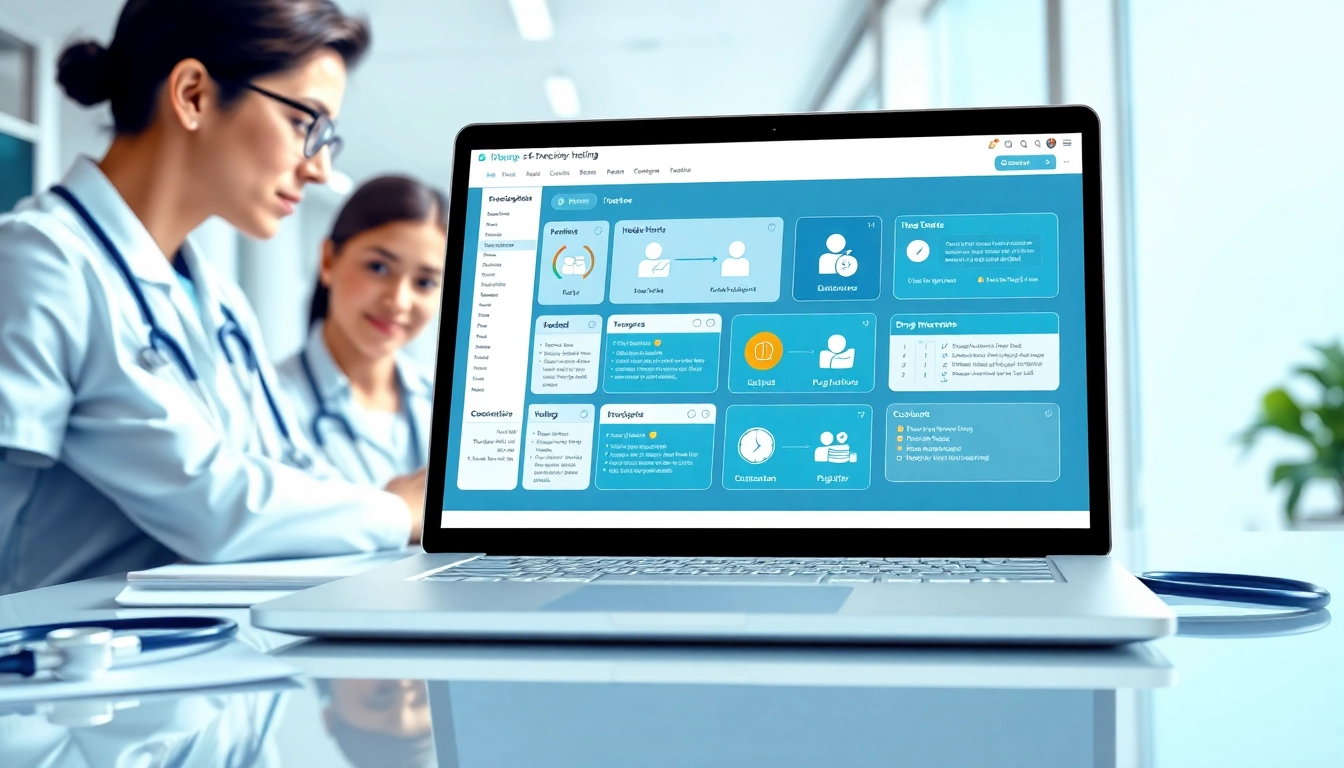Main Features of Eprescribing Software
In the evolving landscape of healthcare technology, features of eprescribing software stand out as essential tools that enhance the prescribing workflow. These systems are designed to improve the overall prescribing process, minimize human errors, and increase efficiency across medical practices. In this section, we will delve into the critical features of e-prescribing software that make it indispensable for healthcare providers.
User-Friendly Dashboards and Interfaces
One of the deciding factors in the successful adoption of e-prescribing software is its user interface. A well-designed dashboard allows healthcare providers to navigate through the software with ease, reducing the time spent on training and minimizing errors. With intuitive layouts, features such as quick prescription generation, patient record access, and clear navigation links can be completed in just a few clicks. This usability not only enhances the user experience but also leads to more accurate and faster prescribing, benefiting both the provider and the patient.
Integration with Electronic Health Records
Integrating e-prescribing software with Electronic Health Records (EHR) is a critical component that enhances its functionality. This integration allows prescribers to access a patient’s complete medical history, ensuring that prescriptions are appropriate based on past treatments and allergies. For instance, real-time access to medical records can prevent dangerous drug interactions, offering healthcare professionals a crucial safety net. Moreover, integrated systems streamline workflows, reducing time spent on administrative tasks, enabling more focus on patient care.
Real-Time Prescription Monitoring
Real-time prescription monitoring is increasingly becoming a standard feature in e-prescribing software. This capability allows healthcare providers to monitor and track prescriptions as they are being filled. By accessing up-to-date patient medication histories, providers are better equipped to make decisions that prevent issues such as over-prescribing or misuse of controlled substances. Additionally, these tools can help in identifying patterns that might indicate substance abuse, allowing for timely interventions.
Benefits of Eprescribing Software for Healthcare Providers
The adoption of e-prescribing software offers a myriad of benefits not only for healthcare providers but also for patients. In this section, we will explore some of the most significant advantages of implementing e-prescribing systems in healthcare practices.
Improved Patient Safety and Accuracy
One of the primary advantages of e-prescribing is the significant enhancement in patient safety. Traditional handwritten prescriptions are often susceptible to misinterpretations, with unclear handwriting leading to dispensing errors. E-prescribing systems eliminate this risk by providing clear, printed prescriptions directly to pharmacies. Furthermore, these systems often come equipped with medication decision support tools that alert prescribers to potential drug interactions, allergies, and other issues before the prescription is finalized. This substantial increase in accuracy drastically reduces adverse drug events (ADEs) and enhances patient trust in their healthcare providers.
Streamlined Workflow for Prescribers
E-prescribing software optimizes the workflow of prescribers by automating many of the processes involved in prescription management. Features such as refill requests, medication history tracking, and integration with pharmacy systems facilitate a smoother workflow. Prescribers can quickly handle prescription renewals without multiple patient visits, freeing up valuable time and resources. As a result, a significant reduction in administrative tasks leads to improved job satisfaction and allows healthcare professionals to spend more time on direct patient care.
Cost and Time Efficiency in Prescription Management
E-prescribing not only enhances operational efficiency but also contributes to cost savings within healthcare practices. By significantly reducing the time spent on handwritten prescriptions and phone calls to pharmacies, providers can increase their patient turnover. Moreover, electronic prescriptions reduce costs associated with paper, ink, and additional administrative overhead. The elimination of physical paperwork accelerates the prescription cycle, ensuring patients receive their medications promptly and helping to avoid unnecessary complications or health issues.
Common Features of Eprescribing Software
While the benefits of e-prescribing software are well recognized, the specific functionalities can vary widely. This section outlines some of the most common features that healthcare providers should consider when evaluating e-prescribing solutions.
Medication History Access and Alerts
Access to comprehensive medication histories is a vital feature of e-prescribing software. This capability allows prescribers to review all medications a patient has been prescribed, including over-the-counter drugs and supplements. Having this comprehensive view helps to avoid potential negative interactions and duplications. Additionally, alerts can be triggered if a patient reports new medications or changes in conditions that may require adjustments in prescribed drugs.
Drug Interaction Checks
Drug interaction checks are often seamlessly integrated within e-prescribing systems, providing real-time analysis of prescribed medications against potential interactions with existing treatments. This functionality is crucial in preventing adverse effects and ensuring the safety of patients. Automation of these checks saves time and reinforces the reliability of the prescribing process, as it empowers healthcare providers to make informed decisions based on up-to-date information.
Electronic Prior Authorization Features
Electronic prior authorization (ePA) features are increasingly becoming a fundamental aspect of e-prescribing software. This functionality streamlines the often cumbersome prior authorization process, which can be a significant barrier to efficient medication prescribing. By incorporating ePA, providers can submit prior authorization requests electronically, reducing delays in patient care and improving medication adherence. The automated tracking of responses from insurance providers allows prescribers to stay informed and act quickly, leading to better clinical outcomes.
Challenges and Considerations in Eprescribing Implementation
Despite the numerous benefits, implementing e-prescribing software can come with its own set of challenges. In this section, we will discuss some of the common hurdles healthcare organizations face during implementation and how to navigate them effectively.
Technical Integration with Existing Systems
Integrating e-prescribing software with existing systems, such as EHRs and practice management software, can present significant technical challenges. Disparate systems may not communicate efficiently, leading to workflow disruptions and data inaccuracies. To mitigate these challenges, providers should conduct a thorough analysis of their current infrastructure before implementation. Selecting e-prescribing solutions that offer robust integration and compatibility can ease this transition. Engaging with IT specialists during the implementation process can further ensure that integration is carried out seamlessly, minimizing workflow disturbances.
Training Staff on New Technologies
Effective training is vital for ensuring the successful adoption of e-prescribing software. Staff members must be well-acquainted with the new system to utilize its full capabilities effectively. Establishing a comprehensive training program allows healthcare providers to transition smoothly into the new technology. Hands-on workshops, user manuals, and ongoing support can facilitate confidence and fluency among staff members, ultimately reflecting positively on patient care.
Addressing Patient Interactions and Feedback
Engaging with patients during the transition to electronic prescribing facilities is crucial to ensure their comfort and understanding. Providing avenues for patients to express concerns or feedback allows healthcare providers to address issues promptly and shape their approach to suit patient needs. Offering clear communication regarding the benefits of e-prescribing not only alleviates any potential apprehension but also fosters trust between patients and healthcare providers.
Future Trends in Eprescribing Software
As technology continues to evolve, so too will the capabilities of e-prescribing software. In this section, we will examine some of the trends expected to shape the future of e-prescribing.
Artificial Intelligence in Prescription Accuracy
Artificial intelligence (AI) is poised to revolutionize the e-prescribing landscape by providing advanced analytics and decision support tools. As AI becomes increasingly integrated into e-prescribing systems, it will enhance the accuracy of prescriptions by analyzing historical data patterns and providing actionable insights to prescribers. Leveraging machine learning capabilities, AI can help identify potential medication errors before they reach the pharmacy, ultimately leading to improved patient safety.
Enhanced Mobile Access for Prescribers
The trend towards mobile health solutions means that future e-prescribing software will increasingly focus on enhancing mobile access for prescribers. Mobile applications will allow healthcare providers to manage prescriptions anytime and anywhere, improving efficiency and flexibility in patient care. By enabling remote access, prescribers can quickly respond to patient needs and manage prescriptions more effectively during their off-hours or while on the go.
Data Security and Patient Privacy Enhancements
With the rise of digital health solutions, ensuring data security and patient privacy is more critical than ever. Future trends in e-prescribing will prioritize robust security measures to protect sensitive patient information. Encryption, secure communication channels, and compliance with regulations such as HIPAA will be integral features of modern e-prescribing systems. Additionally, ongoing security training for all staff members will further mitigate risks related to data breaches and unauthorized access.



